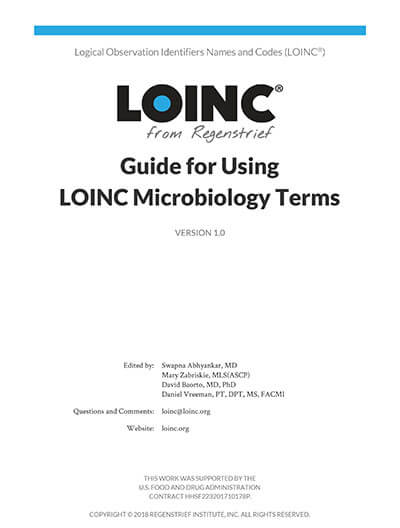LOINC has unveiled a new resource to help users choose the correct LOINC code for microbiology and infectious disease laboratory tests. The "Guide for Using LOINC Microbiology Terms" details best practices to be used by in vitro diagnostic (IVD) assay vendors, laboratory professionals, and anybody else who is mapping microbiology tests to LOINC.
Daniel J. Vreeman, PT, DPT, MS, the Director, LOINC & Health Data Standards within Regenstrief Institute said, "This is a tremendous resource for improving interoperability of microbiology laboratory data. I'm really proud of the LOINC team and community who created, piloted, and iteratively improved this guide."
The primary focus of the guide is mapping observation values that are reported to a patient record. The 113-page document covers lab tests that detect and identify a variety of microorganisms by culture, microscopy, immunoassay, and molecular methods and includes detailed examples for each. It also includes a LOINC primer, important mapping principles, and information on validation, maintenance, and publication of mappings.
The guide is available as a free download from the LOINC website at https://loinc.org/guides/micro. A free LOINC user account is required to access the PDF file.
The effort to create the document was spearheaded by Swapna Abhyankar, MD, LOINC's Associate Director for Content Development, and Mary Zabriskie, MLS(ASCP), one of LOINC's Content Developers. The Laboratory LOINC Committee, the LOINC community, and a large number of stakeholders provided detailed review and guidance for its development. A pilot with three laboratory sites was conducted prior to the guide's publication.
This work was funded by the U.S. Department of Health & Human Services' Presidential Advisory Council on Combating Antibiotic-Resistant Bacteria (PACCARB) initiative through the U.S. Food & Drug Administration. More information on PACCARB can be found at https://www.hhs.gov/ash/advisory-committees/paccarb/.
The guide will be updated based on new LOINC content, evolution in lab testing and reporting, and feedback from the community. These revisions will be made available with one of the twice yearly LOINC releases. Comments and suggestions regarding the guide are welcome via the LOINC website.

